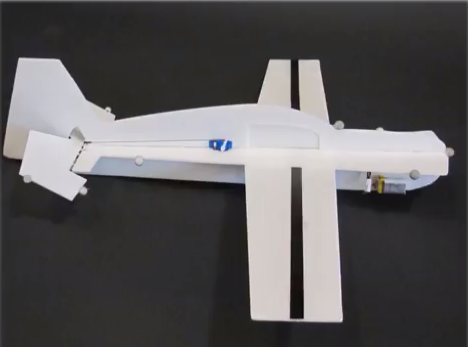Bird-inspired drones may be able to perch on power lines to recharge
By Ben Coxworth
June 23, 2014
Unmanned aerial vehicles (UAVs) are currently being considered for many applications, although one factor that a lot of people tend to gloss over is the aircrafts' limited battery range – being able to stay airborne for only 10 to 30 minutes at a time definitely limits their usefulness. Researchers at MIT, however, are developing a possible solution. They're working on a fixed-wing UAV that can perch on power lines and use their emitted magnetic fields to recharge its battery, before continuing on its way.
While multi-rotor UAVs are certainly more adept at perching on things, fixed-wing models tend to be faster and more energy-efficient, thus making them better-suited to a variety of scenarios. The main challenge lies in finding a way of allowing them to halt their forward momentum, stall out, and hook onto a power line.
The MIT team studied birds such as pigeons and eagles in order to find the answer.
They noted how the birds flare their wings and tail, adjust the orientation of their body to a high angle of attack, and assess the trajectory needed in order to perch. These factors and others were used to create a computer model that would allow fixed-wing UAVs to do the same things, using only their own on-board sensors and other electronics for guidance.
As a result, the team has so far developed a foam-bodied miniature glider that is consistently able to hook onto a string adjacent to a power line, when launched toward it in a lab. The UAV is even able to locate the power line by detecting the magnetic fields coming from it, and can compensate for light winds when doing so.
In previous experiments at MIT, UAVs were assisted by a series of wall-mounted cameras and a separate computer, that relayed commands to the aircraft.
Perching fixed-wing UAVs (although not ones that use power lines to recharge) are also being developed by the University of Illinois, EPFL, UC San Diego and AeroVironment.
More information on the MIT UAV is available in the video below.
Source: MIT via IEEE Spectrum
Copyright © gizmag 2003 - 2014 To subscribe or visit go to: http://www.gizmag.com
http://www.gizmag.com/bird-inspired-perching-uav/32664

